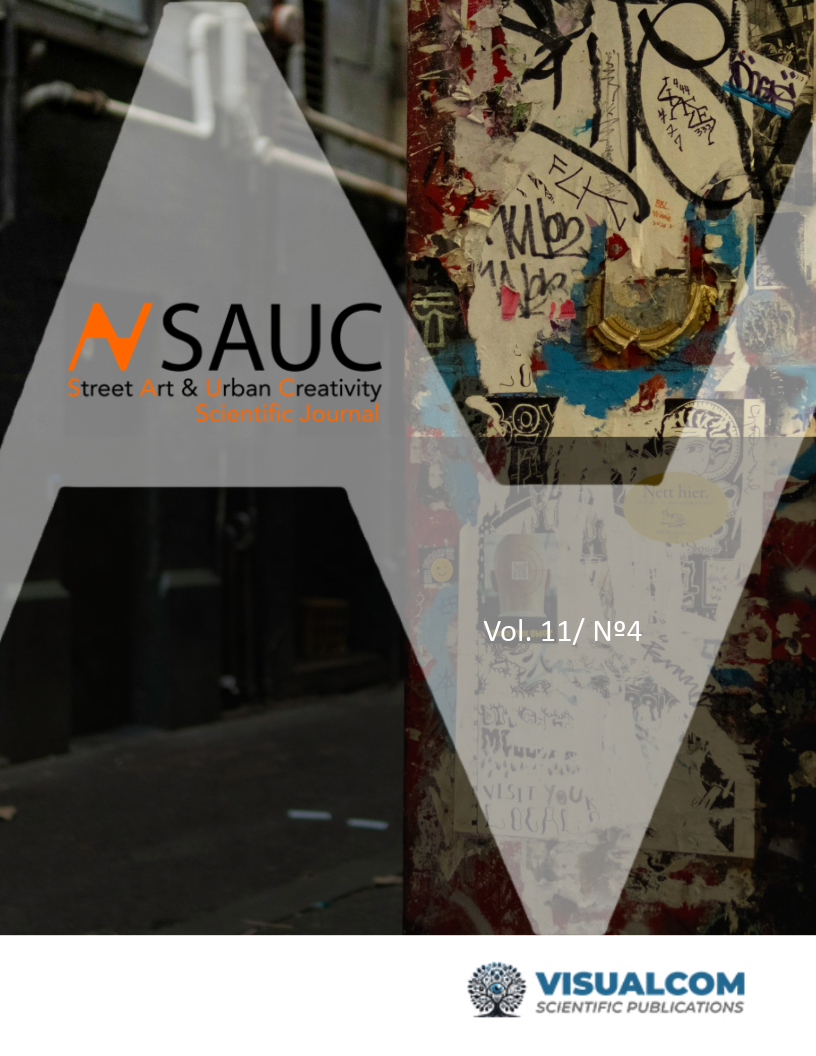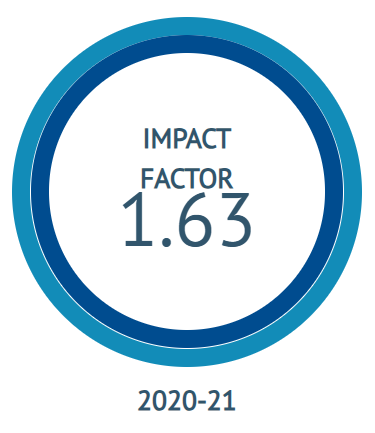Communication, Gentrification, and Urban Transformation
Community response on social media
DOI:
https://doi.org/10.62161/sauc.v11.5795Keywords:
Gentrification, Lavapiés, Tourism, Investment funds, Urban transformation, Social movements, Social MediaAbstract
Gentrification is an urban process characterised by the renewal of neighbourhoods and the arrival of more affluent residents. While it can lead to improvements in infrastructure and public safety, it often displaces long-standing, lower-income populations due to rising living costs, thereby transforming the social fabric and local services of the area. Using a case study of the Lavapiés neighbourhood in Madrid, this article examines how residents use social media to coordinate and resist this phenomenon. It establishes the current context of gentrification in the area, explores the role of political actors past and present, and analyses the actions taken by neighbourhood groups on social media. The article concludes that, although local social movements are limited in scope, their primary focus is on opposing tourist accommodation and investment funds.
Downloads
Global Statistics ℹ️
|
1320
Views
|
698
Downloads
|
|
2018
Total
|
|
References
Alexandri, G. & Janoschka, M. (2018). Who loses and who wins in a housing crisis? Housing Policy Debate, 28(1), 117-134. https://doi.org/10.1080/10511482.2017.1324891
Ardura Urquiaga, A., Lorente Riverola, I. & Sorando, D. (2021). Vivir en la incertidumbre: burbuja de alquiler y olas de gentrificación entre crisis en Madrid. Revista INVI, 36(101), 56-82. https://dx.doi.org/10.4067/S0718-83582021000100056
Arévalo Salinas, A. I., Cabrera Altieri, D. H. & García-López, M. (2021). Caracterización e impacto de los vídeos de YouTube sobre el conflicto de la vivienda en España. IC – Revista Científica de Información y Comunicación, 18, 155-174. https://dx.doi.org/10.12795/IC.2021.I18.09
Armas-Díaz, A. y Sabaté-Bel, F. (2022). Struggles on the Port of Granadilla: defending the right to nature. Territory, Politics, Governance, 10(2), 256-276. https://doi.org/10.1080/21622671.2020.1773918
Armas-Díaz, A., Ginés-De La Nuez, M. C. & Friedel, S. (2023a). Desposesión de vivienda y gentrificación en la ciudad turística. El caso de Puerto de la Cruz (Canarias, España). Scripta Nova, 27(1), 211-237. https://doi.org/10.1344/sn2023.27.38980
Armas-Díaz, A., Torres-Gutiérrez, F. J., Sabaté-Bel, F. & Díaz-Rodríguez, M.C. (2023b). Gentrificación global: miradas más allá de la hegemonía anglosajona. Scripta Nova, 27(2), 1-24. https://doi.org/10.1344/SN2023.27.42651
Arroyo Alba, M. (2019). Acceso a la vivienda en contextos de gentrificación y turistificación urbana. Tendencias Sociales. Revista de Sociología, (4), 79-98. https://doi.org/10.5944/ts.4.2019.25258
Arroyo-Almaraz, I., Calle-Mendoza, S. & Van Wyk, C. (2018). La eficacia en la comunicación de las ONGD. El uso de Facebook en campañas de emergencia. Revista Latina de Comunicación Social, 73, 765-789. https://doi.org/10.4185/RLCS-2018-1281
Bailey, N. & Minton, J. (2018). The suburbanisation of poverty in British cities, 2004-16: extent, process-es and nature. Urban Geography, 39(6), 892-915. https://doi.org/10.1080/02723638.2017.1405689
Barañano Cid, M. & Uceda Navas, P. (2021). Embajadores/Lavapiés, ¿un barrio con vulnerabilidad o gentrificado? Ciudad y Territorio. Estudios Territoriales, LIII (Monográfico 2021), 83-100. https://doi.org/10.37230/CyTET.2021.M21.05.
Barona, I. (2024). Las Prácticas Artístics y la Gentrificación en el Espacio Urbano Postmoderno. BRAC -Barcelona, Research, Art, Creation, 12(3), 1-32. https://doi.org/10.17583/brac.13370
Benach, N., Albet i Mas, A. (1963). La gentrificación como una estrategia global. Papers: Regió Metropolitana de Barcelona: Territori, estratègies, planejament, 60, 17-23, https://bit.ly/442zIVh.
Beswick, J., Alexandri, G., Byrne, M., Vives-Miró, S., Fields, D., Hodkinson, S. & Janoschka, M. (2016). Speculating on London’s housing future. City, 20(2), 321-341. https://doi.org/10.1080/13604813.2016.1145946
Botella Ordinas, E. (2023). La erosión de la turistificación de las trabajadoras domésticas y de cuidados en Lavapiés. Dilemata, (40), 65-78. https://bit.ly/3XxmkE0
Castillero Ostio, E., Gil Ramírez, M. & De Travesedo Rojas, R. G. (2021). Movilización social en red. Facebook como canal de comunicación estratégico de la respuesta contestataria ciudadana. Inclusión y activismo digital: participación ciudadana y empoderamiento desde la diversidad. 465-488. https://bit.ly/4gSAx7x
CIS - Centro de Investigaciones Sociológicas: (2024) Barómetro de septiembre de 2024, Avance de resultados, Estudio nº 3474, septiembre. https://bit.ly/3MXVQGL.
Cocola-Gant, A. & López-Gay, A. (2020). Trans-national gentrification, tourism and the formation of ‘foreign only’ enclaves in Barcelona. Urban Studies, 57(15), 3025-3043. https://doi.org/10.1177/0042098020916111
Cocola-Gant, A., & Gago, A. (2021). Airbnb, buy-to-let investment and tourism-driven displacement: A case study in Lisbon. Environment and Planning A: Economy and Space, 53(7), 1671-1688. https://doi.org/10.1177/0308518X19869012
Codina, L. (2020). Revisiones bibliográficas sistematizadas en Ciencias Humanas y Sociales. 1: Fundamentos. En C. Lopezosa, J. Díaz-Noci & L. Codina (Eds.) Methodos Anuario de Métodos de Investigación en Comunicación Social, 1. Barcelona: Universitat Pompeu Fabra (pp. 50-60). http://dx.doi.org/10.31009/methodos.2020.i01.05
Codina, L., Lopezosa, C. & Freixa Font, P. (2021). Scoping reviews en trabajos académicos en comunicación: frameworks y fuentes. En M. A. Larrondo Ureta (Ed.) A, Información y Big Data en el sistema híbrido de medios-XIII Congreso Internacional de Ciberperiodismo. País Vasco. [Leioa]: Universidad del País Vasco (pp. 67-85). https://bit.ly/3XV4zjB
Coller, X. (2005). Estudio de casos. Centro de Investigaciones Sociológicas. https://bit.ly/3GiGuNp
Coq-Huelva, D. (2013). Urbanisation and financialisation in the context of a rescaling state: The case of Spain. Antipode, 45(5), 1213-1231. https://doi.org/10.1111/anti.12011
Di Feliciantonio, C. & Aalbers, M. B. (2018). The prehistories of neoliberal housing policies in Italy and Spain and their reification in times of crisis. Housing Policy Debate, 28(1), 135-151. https://doi.org/10.1080/10511482.2016.1276468
García-Lamarca, M. (2017). From occupying plazas to recuperating housing. International Journal of Urban and Regional Research, 41(1), 37-53. https://doi.org/10.1111/1468-2427.12386
García Pérez, E. (2014). Gentrificación en Madrid: de la burbuja a la crisis. Revista de Geografía Norte Grande, (58), 71-91. http://dx.doi.org/10.4067/S0718-34022014000200005
García Pérez, E., Pedalino Curto, C., Ardura Urquiaga, A. & Zuñiga Simon, W. C. (2024). Paralelismos en la transformación de barrios mediterráneos frente a la gentrificación turística, el caso de I quartieri spagnoli de Nápoles respecto a Lavapiés, Madrid. Scripta Nova. Revista Electrónica de Geografía y Ciencias Sociales, 28(1). https://doi.org/10.1344/sn2024.28.41426
Grant, M. J. & Booth, A. (2009). A typology of reviews: an analysis of 14 review types and associated methodologies. Health information & libraries journal, 26(2), 91-108. https://doi.org/10.1111/j.1471-1842.2009.00848.x
Gutiérrez, A., & Domènech, A. (2017). The Spanish mortgage crisis. Die Erde, 148(1), 39-57. https://doi.org/10.12854/erde-148-29
Hernández-Sampieri, R., Fernández Collado, C., & Baptista Lucio, P. (2014). Metodología de la investigación. Vol. 6. México. McGraw-Hill. https://bit.ly/4keYeY3
Hochstenbach, C. & Musterd, S. (2021) A regional ge-ography of gentrification, displacement and the suburbanization of poverty: towards an extended research agenda. rea https://doi.org/10.1111/area.12708
Iglesias Vicinay, S. (2020). Gentrificación: evolución del fenómeno, causas y relación con los modelos socio-económicos y movimientos urbanos [Trabajo Final de Grado en Fundamentos de la Arquitectura]. Universitat Politècnica de València. https://bit.ly/4kXG7H0
Jost, J., Barberá, P., Bonneau, R., Langer, M., Metzger, M., Nagler, J., Sterling, J. & Tucker, J. (2018). How social media facilitates, political protest: Information, motivation, and social networks. Political Psychology, 38, 85-118. https://doi.org/10.1111/pops.12478
Knirsch, L. M. & Gago García, C. (2021). Gentrificación y turismo: Estudio de caso comparado mediante líneas de tiempo en dos distritos centrales de Madrid (centro) y Berlín (mitte). Una perspectiva integrada: aportaciones desde las Geografías Económica, Regional y de los Servicios para la cohesión y la competitividad territorial. 54-62. https://bit.ly/47EGMHE
Leal, J. (2004). Segregation and social change in Madrid metropolitan region. The Greek Review of Social Research, 113, 81-104. https://doi.org/10.12681/grsr.9219
Leal, J., & Sorando, D. (2013). Rehabilitación urbana y cambio social en las grandes ciudades españolas. Monografías de la Revista Aragonesa de Administración Pública, 15, 205-236. https://bit.ly/4egAi4l
Llurdés Coit, J. C. & Cerdán Heredia, Rufi (2018). ¿Es posible la gentrificación turística en ciudades no turísticas? El caso de Manresa y el turismo religioso. ROTUR. Revista de ocio y turismo, 12(2), 115-134. https://doi.org/10.17979/rotur.2018.12.2.3480
López-Gay, A., Sales-Favà, J., Solana-Solana, M.; Fernández, A. & Peralta, A. (2021). El avance de la gentrificación en Barcelona y Madrid, 2011-2019: análisis socioespacial a partir de un índice de gentrificación. Estudios Geográficos, 82(291), 1-29. https://doi.org/10.3989/estgeogr.202195.095
López-Gay, A., Ortiz-Guitart, A. & Solana-Solana, M. (2022). Vivienda, cambio poblacional y desplazamiento en un barrio en proceso de gentrificación. El caso de Sant Antoni (Barcelona). Revista EURE - Revista De Estudios Urbano Regionales, 48(143). http://dx.doi.org/10.7764/eure.48.143.06
López Morales, E. (2009). Loretta Lees, Tom Slater & Elvin Wyly. Gentrification. Revista de geografía Norte Grande, (44), 155-158. https://dx.doi.org/10.4067/S0718-34022009000300010
López Villanueva, C. & Crespi Vallbona, M. (2021). Gentrificación y turistificación: dinámicas y estrategias en Barcelona. Encrucijadas: Revista Crítica de Ciencias Sociales, 21(1), 7. https://bit.ly/3TH6bKB
McCall, E. (2011). Comunicación para el desarrollo: Fortaleciendo la eficacia de las Naciones Unidas. Nueva York: QUO Bangkok. https://bit.ly/3BjNnLy
Mazorra Rodríguez, Á. (2023). Tendencias de gentrificación y turistificación en el centro histórico de Madrid. El caso de Lavapiés. Historia y MEMORIA, (26), 199-231. https://doi.org/10.19053/20275137.n26.2023.13672
Módenes, J. A. (2023). La demanda de vivienda. ¿Quo vadis?, Perspectives Demogràfiques, 32, 1-4. https://doi.org/10.46710/ced.pd.esp.32.
Módenes, J. A. & López-Colás, J. (2014). Cambio demográfico reciente y vivienda en España: ¿hacia un nuevo sistema residencial? Revista Española de Investigaciones Sociológicas (REIS), 148(1), 103-133. https://doi.org/10.5477/cis/reis.148.103
Naredo, J.M. (2010). El modelo inmobiliario español y sus consecuencias. Boletín CF+S, 44, 13-27. https://bit.ly/3Bg7muB
Nasarre-Aznar, S. (2020). Llueve sobre mojado: el problema del acceso a la vivienda en un contexto de pandemia (It Never Rains but It Pours: The Problem of Access to Housing in a Pandemic Context). Derecho privado y Constitución, (37), 273-308. https://doi.org/10.18042/cepc/dpc.37.02
Nel·lo, O. (2018). Segregació residencial, gentrificació urbana i dret a la ciutat: una lectura des de Barce-lona. Papers: Regió Metropolitana de Barcelona, 60, 48-61. https://bit.ly/3ZEzFwX
Nogueira López, A. (2020). Vulnerabilidad administrativa: Los obstáculos administrativos en el acceso a los programas de vivienda. Políticas y derecho a la vivienda. Gente sin casa y casas sin gente, Tirant lo Blanch, Valencia, 213-244. https://bit.ly/4nkad9r
Parralejo Sánchez, J. J., & Díaz Parra, I. (2021). Gentrificación y turistificación en las áreas urbanas centrales de Sevilla y Cádiz. XV Coloquio de Geografía Urbana. Servicio de Publicaciones y Difusión Científica de la Universidad de Las Palmas de Gran Canaria (ULPGC). https://bit.ly/4em71Wx
Reichborn-Kjennerud, K., Ruano, J.M. & Sorando, D. (2021). Ways to gain influence for residents in two gentrifying neighbourhoods: a comparison between Tøyen in Oslo and Lavapiés in Madrid. Papeles de población, 27(110), 109-137. http://dx.doi.org/10.22185/24487147.2021.110.32
Saiz de Lobado García, E. (2022). Multilingüismo y gentrificación en el paisaje lingüístico de Lavapiés. Kamchatka. Revista De análisis Cultural., (20), 381–401. https://doi.org/10.7203/KAM.20.21379
Saiz de Lobado, E. (2021). Construcción identitaria de la inmigración en el paisaje madrileño: Lavapiés y San Diego. Migraciones internacionales, 12, rmiv1i12358. https://doi.org/10.33679/rmi.v1i1.2358
Sánchez Llorca, A. (2023). Memorias nómadas: autonomía, territorio y gentrificación. La disputa por el centro de Madrid. Historia y MEMORIA, (26), 165-198. https://doi.org/10.19053/20275137.n26.2023.13628
Sequera Fernández, J. (2020). Gentrificación: Capitalismo cool, turismo y control del espacio urbano. Catarata.
Sigler, T., & Wachsmuth, D. (2020). New directions in transnational gentrification: Tourism-led, state-led and lifestyle-led urban transformations. Urban Studies, 57(15), 3190-3201. https://doi.org/10.1177/0042098020944041
Smith, N. (2002). New globalism, new urbanism: Gentrification as global urban strategy. Antipode, 34(3), 434-457. https://doi.org/10.1111/1467-8330.00249
Sorando Ortín, D. & Leal, J. (2019). Distantes y desiguales: el declive de la mezcla social en Barcelona y Madrid. Revista Española de Investigaciones Sociológicas, 167, 125–148. https://doi.org/10.5477/cis/reis.167.125
Sorando Ortín, D. & Ardura Urquiaga, Á. (2018). Procesos y dinámicas de gentrificación en las ciudades españolas. Papers: Regió Metropolitana de Barcelona: Territori, estratègies, planejament, (60), 34-47. https://bit.ly/4exeP6I
Leal, J. (2004). Segregation and social change in Madrid metropolitan region. The Greek Review of Social Research, 113, 81-104. https://doi.org/10.12681/grsr.9219
Torres Bernier, E., Vega Hidalgo, A. & Ortega Palomo, J. (2018). The gentrification process at Lavapiés neighborhood. Journal of Tourism and Heritage Research, 1(3), 41-70. https://bit.ly/3XIEYcb
Vestri, G. (2020). Acceso a la vivienda en la época de la «gentrificación» y de la «turisficación». El distrito casco antiguo de Sevilla como caso de estudio: legislaciones administrativas a prueba. Dereito: Revista xurídica Da Universidade De Santiago De Compostela, 29(Ext). https://doi.org/10.15304/dereito.29.Ext.6554
Yin, Robert K. (2018). Case Study: Research and Applications. SAGE Publications. https://bit.ly/47Etpaw
Downloads
Published
How to Cite
Issue
Section
License
Copyright (c) 2025 Authors retain copyright and transfer to the journal the right of first publication and publishing rights

This work is licensed under a Creative Commons Attribution-NoDerivatives 4.0 International License.
Those authors who publish in this journal accept the following terms:
-
Authors retain copyright.
-
Authors transfer to the journal the right of first publication. The journal also owns the publishing rights.
-
All published contents are governed by an Attribution-NoDerivatives 4.0 International License.
Access the informative version and legal text of the license. By virtue of this, third parties are allowed to use what is published as long as they mention the authorship of the work and the first publication in this journal. If you transform the material, you may not distribute the modified work. -
Authors may make other independent and additional contractual arrangements for non-exclusive distribution of the version of the article published in this journal (e.g., inclusion in an institutional repository or publication in a book) as long as they clearly indicate that the work was first published in this journal.
- Authors are allowed and recommended to publish their work on the Internet (for example on institutional and personal websites), following the publication of, and referencing the journal, as this could lead to constructive exchanges and a more extensive and quick circulation of published works (see The Effect of Open Access).













